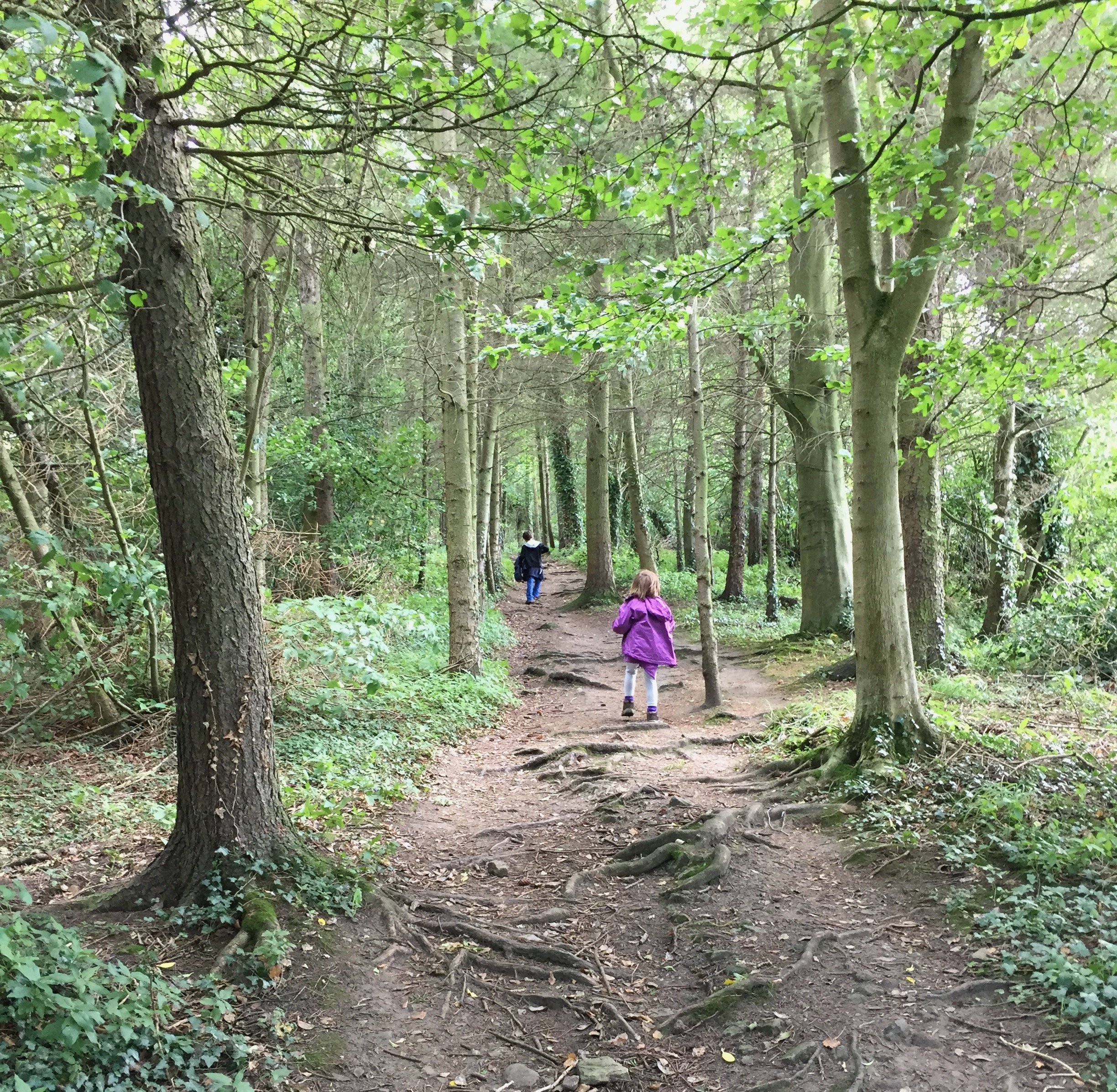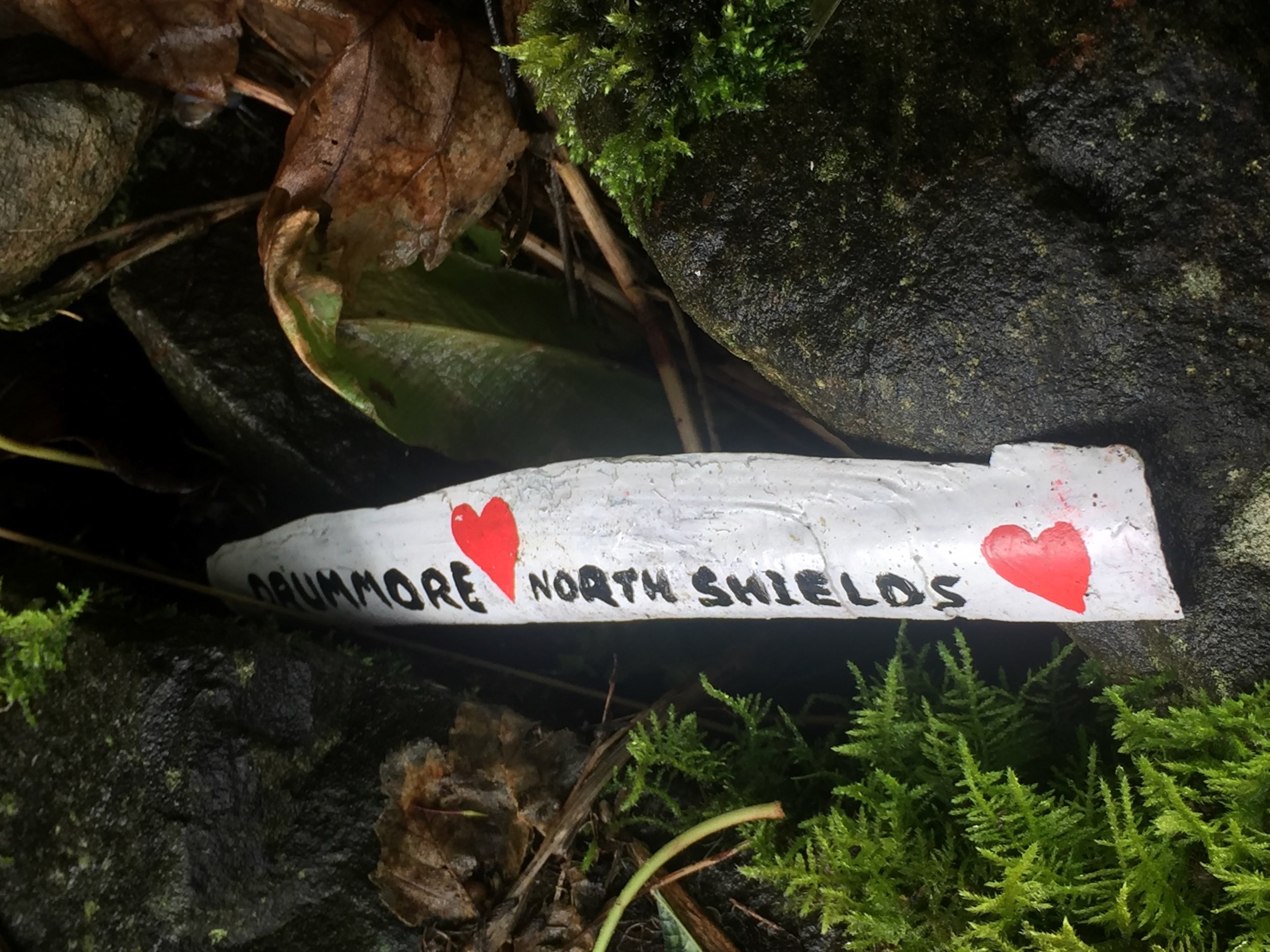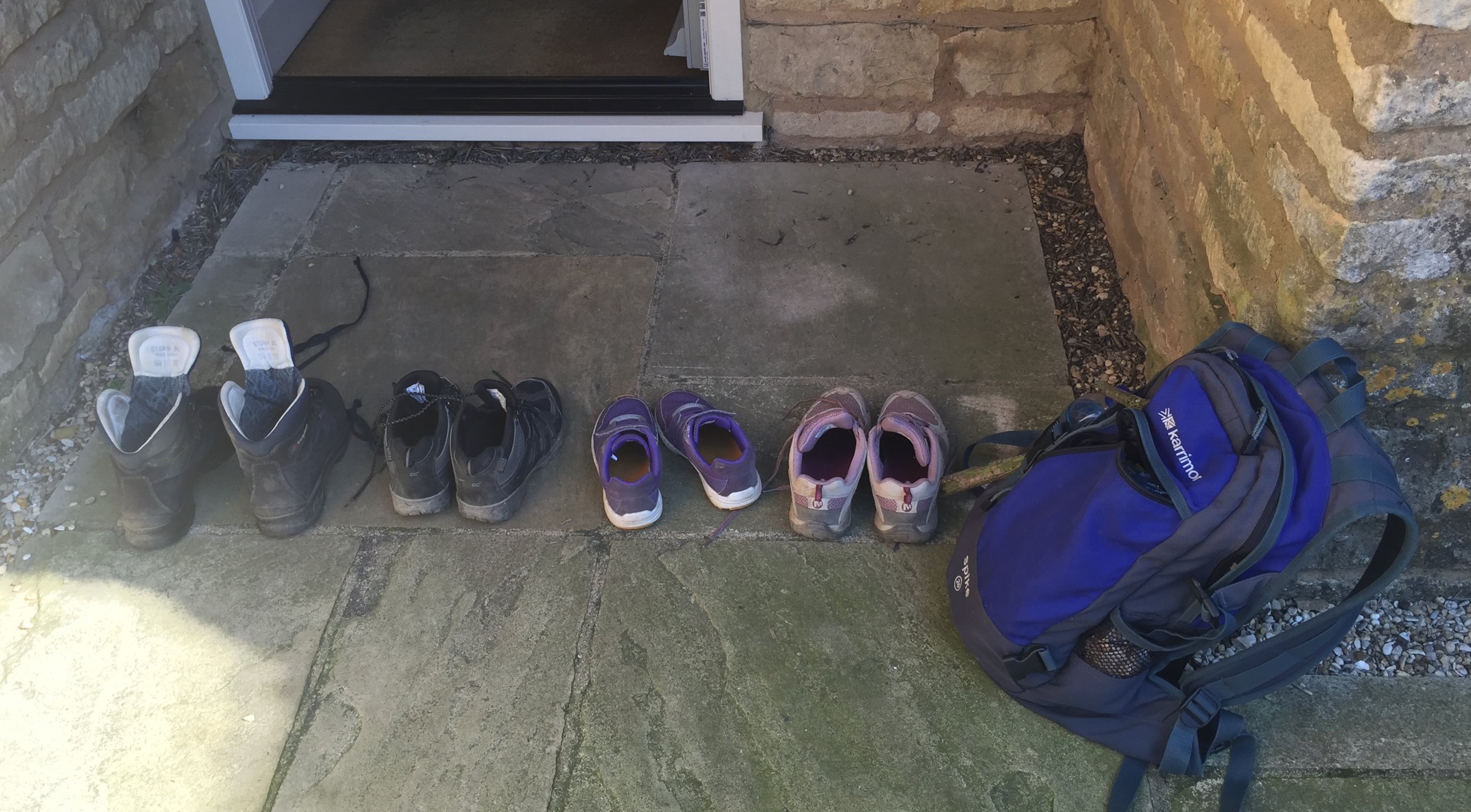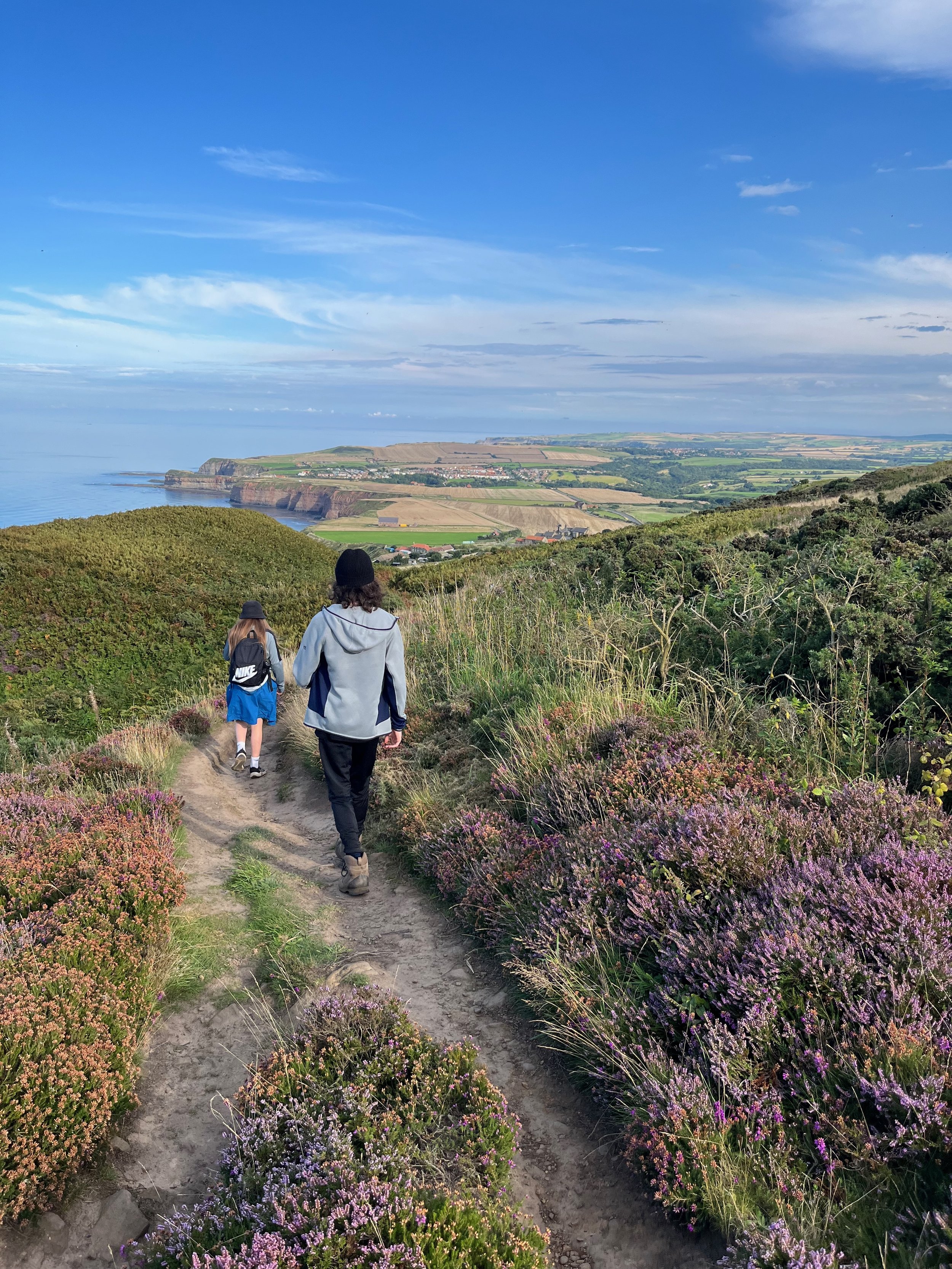A photograph from Team Gurney’s first August Bank Holiday walk in 2015. Image Rachel Hammersley.
At the end of this month my family and I will undertake our 10th annual August Bank Holiday walk. We will hike the Hadrian's Wall Path from Bowness-on-Solway to Wallsend (in fact we plan to continue on to the sea at Tynemouth). When we began this ritual in 2015 my children were 9 and 6. That year we walked part of the Hadrian's Wall route (from Housesteads to Newburn) over three days. When I think back I marvel at my bravery - or recklessness - in embarking on such an adventure. Though we were not walking the entire route, we did some pretty long days and, as the only member of the party over the age of 10, the navigation and motivation were entirely down to me. Yet it was far from my biggest challenge that year.
Just over a year earlier in May 2014 my husband, John Gurney, was diagnosed with metastatic colon cancer. He died before the year was out, cutting his life short, making me a widow and single-parent at the age of 40, and leaving my two young children without their wonderful Dad.
A photograph of my late husband John Gurney from 2014. Image Rachel Hammersley.
The impetus for the walk was twofold. In the first place, John and I had always enjoyed walking and had tried to instil the same love in our children. Embarking on a Bank Holiday walk, then, felt like a way of maintaining a sliver of continuity when so much of our lives had been turned upside down. In planning the walk, I recalled a trip John and I had made several years earlier to Linhope Spout in Northumberland. I was carrying our one-year-old son in a baby backpack and as we reached the waterfall we saw a family with slightly older children skipping along ahead of their parents. We exchanged hopes that one day that would be us with our son - and perhaps a little sibling - running ahead of us, and pledged that we would keep going for walks and would try to make the experience of doing so fun for our children. It did not occur to me at that time that it would be one parent, rather than two, walking behind.
A photograph from 2017 when we walked part of the route on the beach bare foot. Image Rachel Hammersley.
Secondly, the walk addressed a deep need I felt to do something positive in response to our loss, and to ensure that my children were defined by their achievements rather than by the absence of their Dad. Delivering a cheque for £850 (raised through sponsorship for the walk) to the Oncology Day Unit at North Tyneside Hospital, where John had been treated, certainly felt like the kind of positive achievement I had been hoping for.
The money we have raised over the years for cancer-related charities has certainly been important, but alongside this we gained far more from our walks than I could ever have imagined back in 2015. In the years that followed we traversed two reservoirs (Rutland and Kielder) and walked (in three stages) from our front door north to Scotland - an achievement about which we all boast - and (in two stages) from our front door south to Scarborough. We have got lost (on more occasions than I care to remember), walked along a precipice with an alarming drop to our left, encountered fields of bulls, and faced personal demons on numerous occasions, but we have always kept on walking.
The unexpected finds are the best. We spotted this painted stone in the village of Drummore in Galloway in 2020 and felt as though it was left there for us. Image Rachel Hammersley.
Walking, I have discovered, is both a metaphor for - and an excellent means of coping with - grief. Walking means moving at human pace through the landscape. You cannot move any faster than your body will allow, but if you just keep putting one foot in front of another (without thinking too much about what is ahead) you can cover considerable distances. Grief too is a human process, which operates at its own pace and cannot be rushed. Sometimes it feels impossibly hard, but if you just keep inching forward you do make progress. Walking also forces me to slow down from the frenetic pace of my normal life, and to take in and appreciate what is around me in the present. That too is crucial when dealing with grief.
Team Gurney's August Bank Holiday Walks
2015 Hadrian's Wall Housteads to Newburn
2016 Rutland Water
2017 North Shields to Dunstanburgh Castle
2018 Dunstanburgh to Berwick
2019 Berwick to Eyemouth, Fenham to Lindisfarne, College Valley
2020 Rhins of Galloway Coastal Path
2021 Kielder Water
2022 North Shields to Teeside
2023 Redcar to Scarborough
2024 Hadrian's Wall Bowness on Solway to Tynemouth
Our shoes after a day walking Rutland Water in 2016.
Our Bank Holiday walks also served to remind me that despite being thrust kicking and screaming into single-parenthood, I was not alone. The success of the walks has always relied on a small band of loyal family and friends who not only made them possible, but also supported me and my children in so many ways all year round. Central among Team Gurney's support team have been my parents who have driven us to starting points and collected us from end points on multiple occasions. They have been our cheerleaders, our most generous donors, and have listened patiently when - fuelled on adrenalin - we told, and retold, the stories of our exploits. Our first walk also could not have been completed without the kindness and support of my then colleagues and friends Keith and Claire who volunteered to put us up for two nights en route. This not only involved providing us with comfortable beds and delicious meals, but also collecting us from our end point in the evening and dropping us back the next day, and - on our second day - walking over an hour to meet us bringing water and tons of moral support when my poor navigation skills had resulted in a rather long detour. The following year it was my Aunty Cathy and Uncle Stewart who offered to provide bed, breakfast, and evening meal for our walk around Rutland Water. They also walked with us on our final day. On later walks we have been joined by my new partner (now husband) who, as an honorary member of Team Gurney, has completed several walks alongside us.
Bereavement and grief can be a very lonely process. The back-up teams for our walks are representative of how fortunate we have been in the support we have received from family and friends over the last ten years (including John's wider family with whom we have remained close). Without all those people who have stood shoulder to shoulder with us we would have struggled much more than we have.
Walking part of the Yorkshire coast in 2023. Image Rachel Hammersley.
Finally, walking annually has been a means of charting our progress. This came home to me very strongly last year when we were walking part of the Yorkshire coast between Staithes and Whitby. At the far end of Runswick Bay we had to climb up a small waterfall and I was struggling a bit. My daughter turned and instinctively held out her hand to help me up. In that moment I realised that the tables had turned. It was no longer me leading the way, navigating, and motivating the children. I had become the slow one at the back needing inspirational talk and a hand to guide and support me.
Much may have changed since Team Gurney set off on the first walk ten years ago, but there is also much that remains constant - not least my, perhaps reckless, desire for a challenge. This year the Bank Holiday walk is not the only big event in Team Gurney's summer diary. We are doing what we are calling the 'Geordie Double'. Less than two weeks after completing our Hadrian's Wall Walk we will be running the Great North Run (my daughter as a junior and my son and I in the half marathon). I have a feeling that on both the walk and the run I will be relying heavily on the other members of Team Gurney to keep me going.
[This year we are raising money for Maggie's. It is an amazing organisation for people living with cancer and their families, which did so much to support me in those early months after John had died. If you want to sponsor us you can do so at Just Giving: https://www.justgiving.com/page/team-gurneys-geordie-double-2024?utm_medium=fundraising&utm_content=page%2Fteam-gurneys-geordie-double-2024&utm_source=copyLink&utm_campaign=pfp-share]










